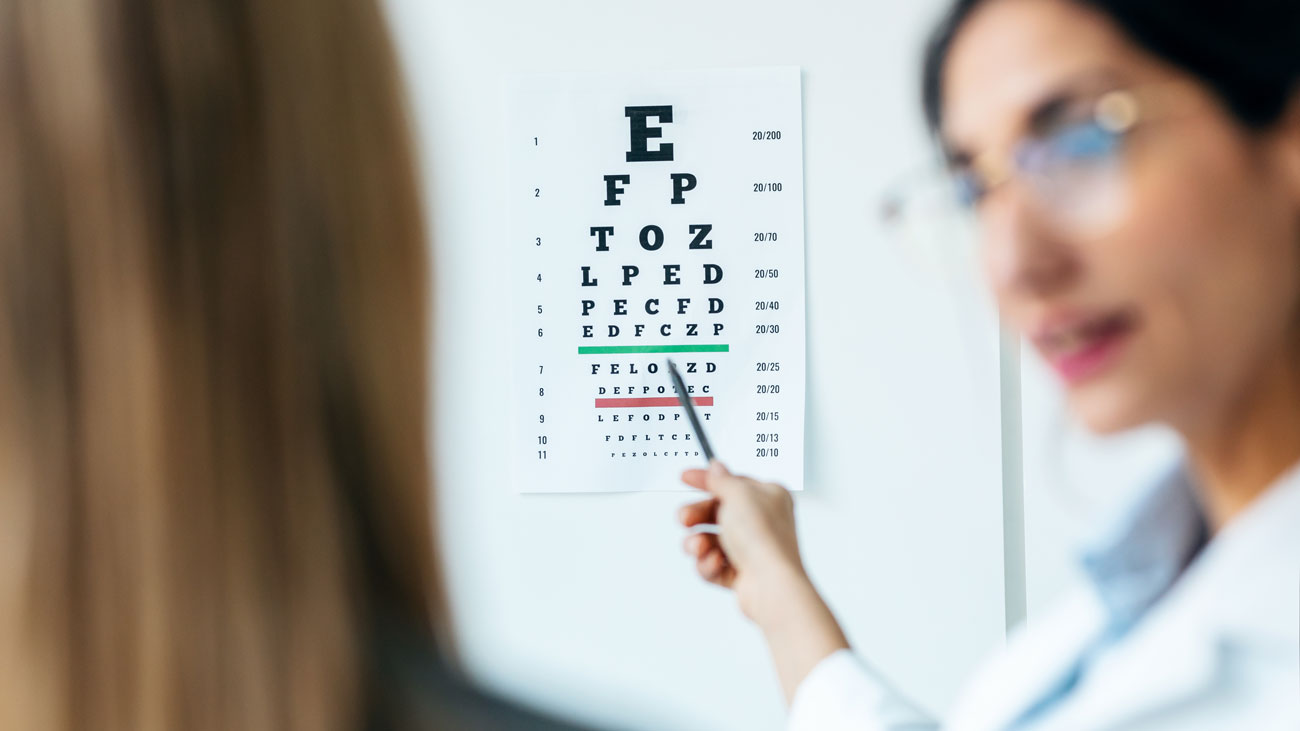
Briefing: Eye see: protecting sight in the workplace
There are a number of areas in the workplace that can affect visual acuity, from the factory to the office. In this briefing, Claire Deacon, health and safety trainer with International Workplace, addresses some of the basics as well as practical ways to address problems with sight.
Robert Bridger, author of the report Introduction to Ergonomics (1995), likens the human eye to a camera:
- The pupil is the aperture, varying the amount of light entering the eye. In very strong light, the pupil size decreases and in low light, the pupil size increases.
- Good lighting increases the depth of field of the eye. When it is bright, the pupil acts like a pinhole camera, and has infinite depth of field, allowing the individual to focus on objects at various distances, thus reducing the load on the visual system.
- Cameras generally have fixed-focal-length lenses where accommodation/focusing depends on adjusting the distance of the lens from the focal plane. However, in humans the refractive power of the eye is altered by the change in shape of the lens.
Given the above, there are a number of ways that the environment or work requirements impact on how well the worker completes tasks.
Close work
The muscle which controls accommodation is the ciliary muscle. This muscle contracts when viewing close objects, thus the workload can be considered to be heavy when one is viewing near objects for extended periods of time. The ideal way to resolve this is to encourage workers to take ‘microbreaks’ every few minutes and focus on something in the distance for a few seconds before resuming their work.
Screen-based working tasks
Of particular concern are repetitive tasks that include prolonged periods of intensive screen-based work that are unbroken by rest pauses or alternating work tasks. These are to be avoided, and the rule of thumb would be five-minute breaks after a long session in addition to tea and lunch breaks, as well as the microbreaks recommended by Bridger. According to Stephen Pheasant, author of Bodyspace: Anthopometry, Ergonomics and the Design of Work, workers should also be encouraged to stretch and diversify their tasks if at all possible.
Visual demands of visual display units (VDUs)
A viewing distance of 500mm should be the absolute minimum and 750mm even better for any screen-based work. Brightness and contrast should be adjustable and glare from windows needs to be avoided. The latter can be achieved by placing the VDU at a right angle to a window and parallel to overhead fluorescent tubes (preferably diffused). When looking at the centre of the screen the worker’s line of sight should be approximately perpendicular to the screen surface, which may require tilting or rotating the VDU or even lifting it slightly. A telephone directory or other large book is normally adequate!
According to the report Fitness for work: The Medical Aspects, it is important to ensure that all lighting and VDUs should be properly maintained to reduce flickering.
Retinal adaptation
Retinal adaptation assists the retina (the light-sensitive part found at the back of the eye) to change its sensitivity to the ambient lighting conditions. This is most important when the worker goes from a dark to a light area or vice versa, as it can take up to 20 minutes for the eye to adapt. This is the reason that, where such areas exist, extra light should be provided at exits and entrances allowing more time for the retina to adapt.
Workers with visual disorders
Workers who have to wear spectacles or contact lenses to work have special challenges. Wearing of personal protective equipment (PPE) can make life uncomfortable and in such cases it is recommended that protective eyewear should be provided with correcting lenses.
Spectacles with flat temple pieces can improve compatibility with certain PPE, such as earmuffs or respirators, but worn with self-contained breathing apparatus they may reduce affectivity.
Workers who wear contact lenses should be identified, as there are a number of occupations where contact lenses should not be worn, such as very dusty environments, as particles may become trapped under the lens, causing headaches and possible infections. Soft water permeable contact lenses are not advised where high-speed lathe work is undertaken, as the fine aerosol of the slurry of oil/water used to cool the cutting tools can be deposited on the lenses. This slurry could also contain bacteria, which could result in eye infections.
In ultraviolet exposure in occupations such as arc welding, lenses should not be worn, however, not because the lens could be ‘welded’ to the eye (the cornea), but because the ultraviolet component of electric arc welding can damage the cells covering the front of the eye (corneal epithelial loss) – this happens whether contact lenses are worn or not. Soft contact lenses may absorb fumes, and when working in cold environments can cause discomfort or irritation.
Work conditions that may be detrimental to the eye
Intensive use of the eyes, either for distance vision or close work, does not result in damage to the vision of healthy eyes. However, the environmental conditions to which the worker is exposed may well cause damage.
The presence of dust may cause irritation and reduced corneal sensation, therefore PPE is imperative. Non-ionising radiation occurs in various occupations, such as infrared rays and heat from furnaces, which cause lens opacity. Ionising radiation that results from exposure to X-rays and radionuclides can cause cataracts.
In conclusion
It is not always easy to assess how the environment will affect a worker’s visual acuity; however, failure to do so can reduce the effectivity, performance and quality of work, therefore all efforts should be made to mitigate the risk factors as simply as possible, as well as to provide the appropriate PPE where this cannot be done.
Teamwork is required between the major role players who deal with occupational health and safety issues to assess the risks and the preferred best practice when visual standards are set.






